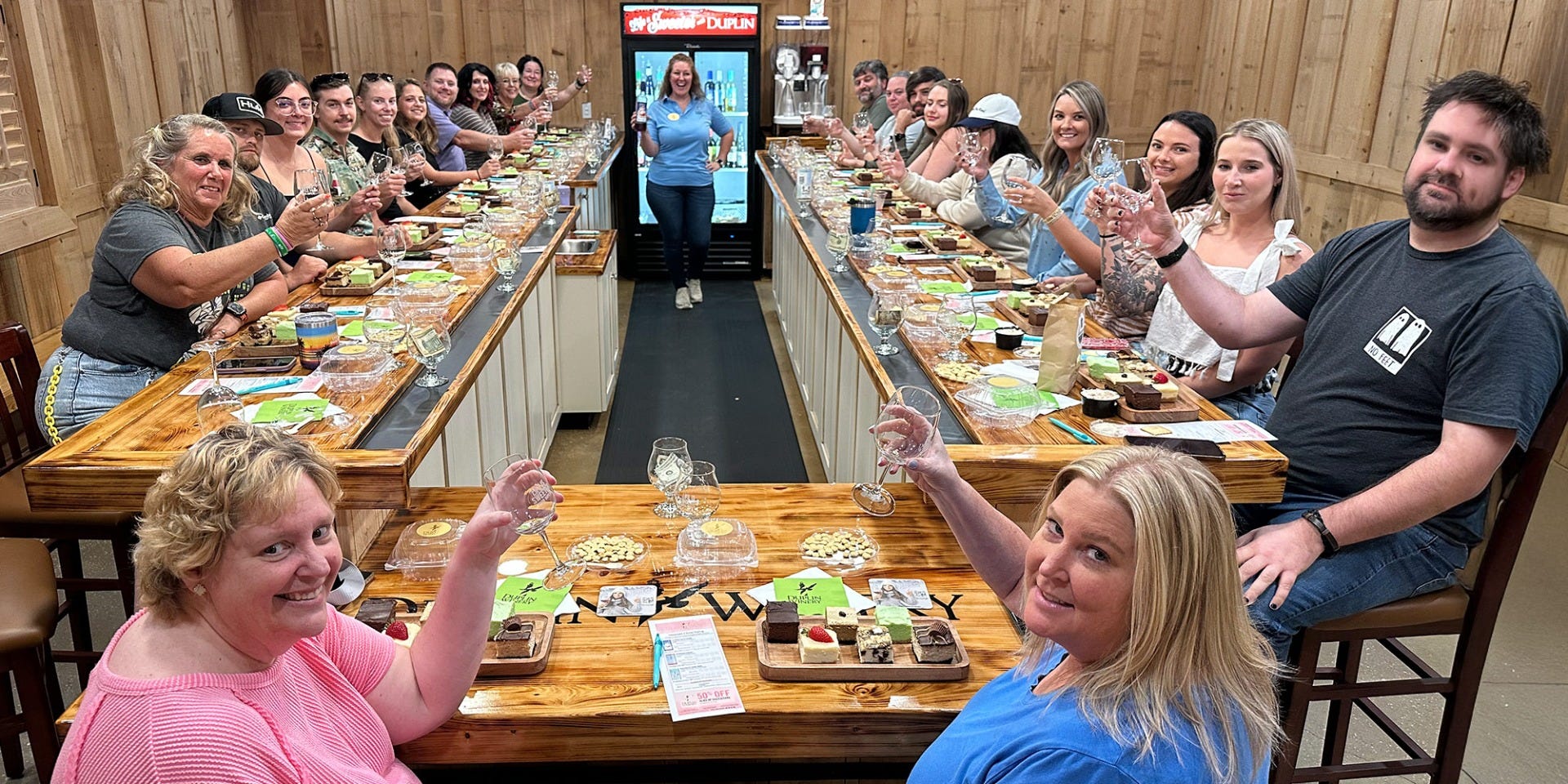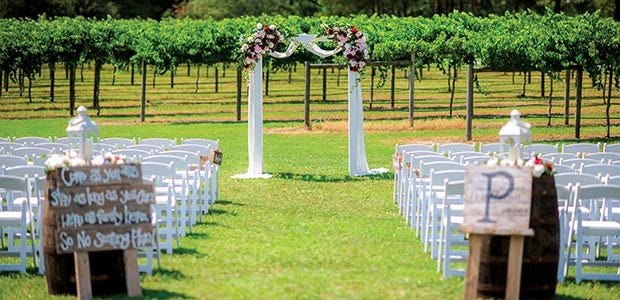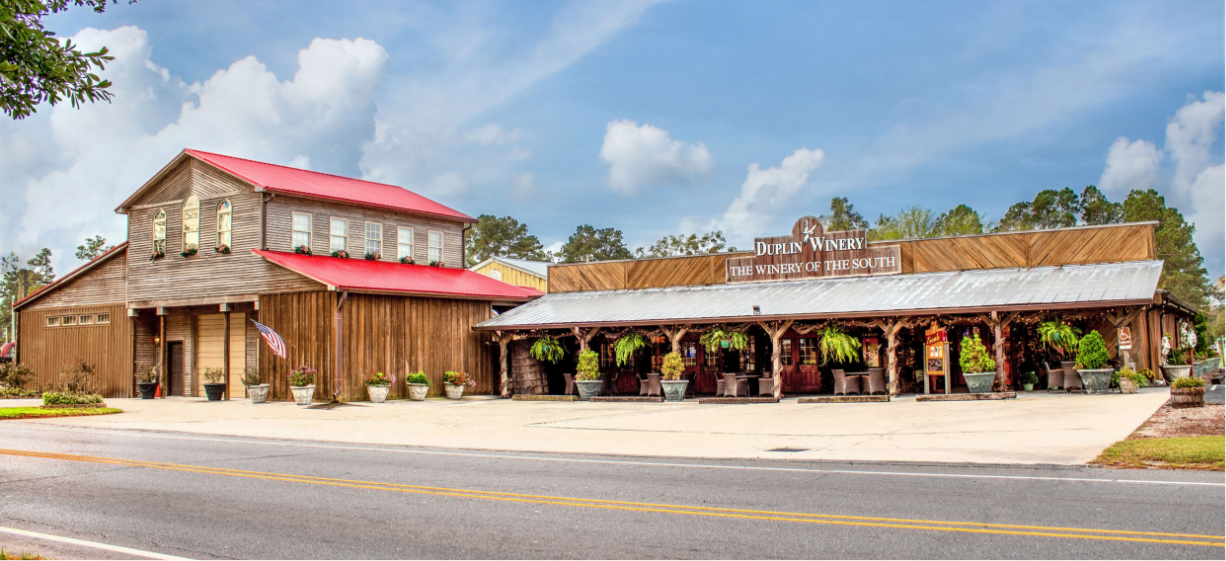Duplin Winery growers actually ice vines to save them from freezing
How do you save a grape vine from freezing to death during one of spring’s surprise cold snaps?
“We fight ice with ice,” Duplin vineyard manager Juan Carlos Munguia said.
Carlos and the vineyard team recently spent a cold, sleepless night icing down muscadine vines. They did the job with a special system designed at Duplin.
While it’s a joy to see tender green shoots pop out in early spring, the lingering chance of frost is a constant worry for Duplin grape growers. A single late frost between temperate days and nights can set back a harvest by at least three years. That means fewer bottles of your favorite Duplin wines.
“The worst freeze we had was in 2007,” Carlos said. “It damaged 50% of production that year and killed some young vines. The ice cracked the tender tissue on the small vines, so we had to cut them all the way to the ground. They were 2-year-old vines, and vines don’t produce grapes until they are 3 years old.”
20 miles of hose, 5,400 grapevines
Using ice to protect plants from frost damage is not new. As temperatures drop to freezing, an irrigation system dispenses a continuous mist on plants. The water freezes around the plant like a glass cloche. Just enough warmth stays between the plant and the ice, protecting leaves, stems and fruit from frostbite.
Strawberry growers keep such irrigation mechanisms on standby each spring, but berry systems usually serve small areas and pump too much water too close to the ground to be useful on large fields of tall grapevines.
Grape growers require over-vine sprinklers.
Three years ago, Carlos and team started sketching a custom system for Duplin Estate vineyards in North Carolina.
Working with TriEst Irrigation in Clinton, N.C., the team focused on a single 26-acre plot hosting 5,387 grape vines.
They laid out nearly 20 miles of hose to carry water to misters.
When a bitter frost arrived in the first days of April, the team was ready to stay up all night to save Duplin's precious young buds.
The entire vineyard team worked alongside Carlos and Duplin winemaker Jason Bryan to monitor temperatures so they would know exactly when to turn on the water.
“That’s where it gets tricky,” Carlos said.
If spigots are turned on too soon, water will be wasted. If water is dispensed too late, plants could suffer more damage than if they had been left alone.
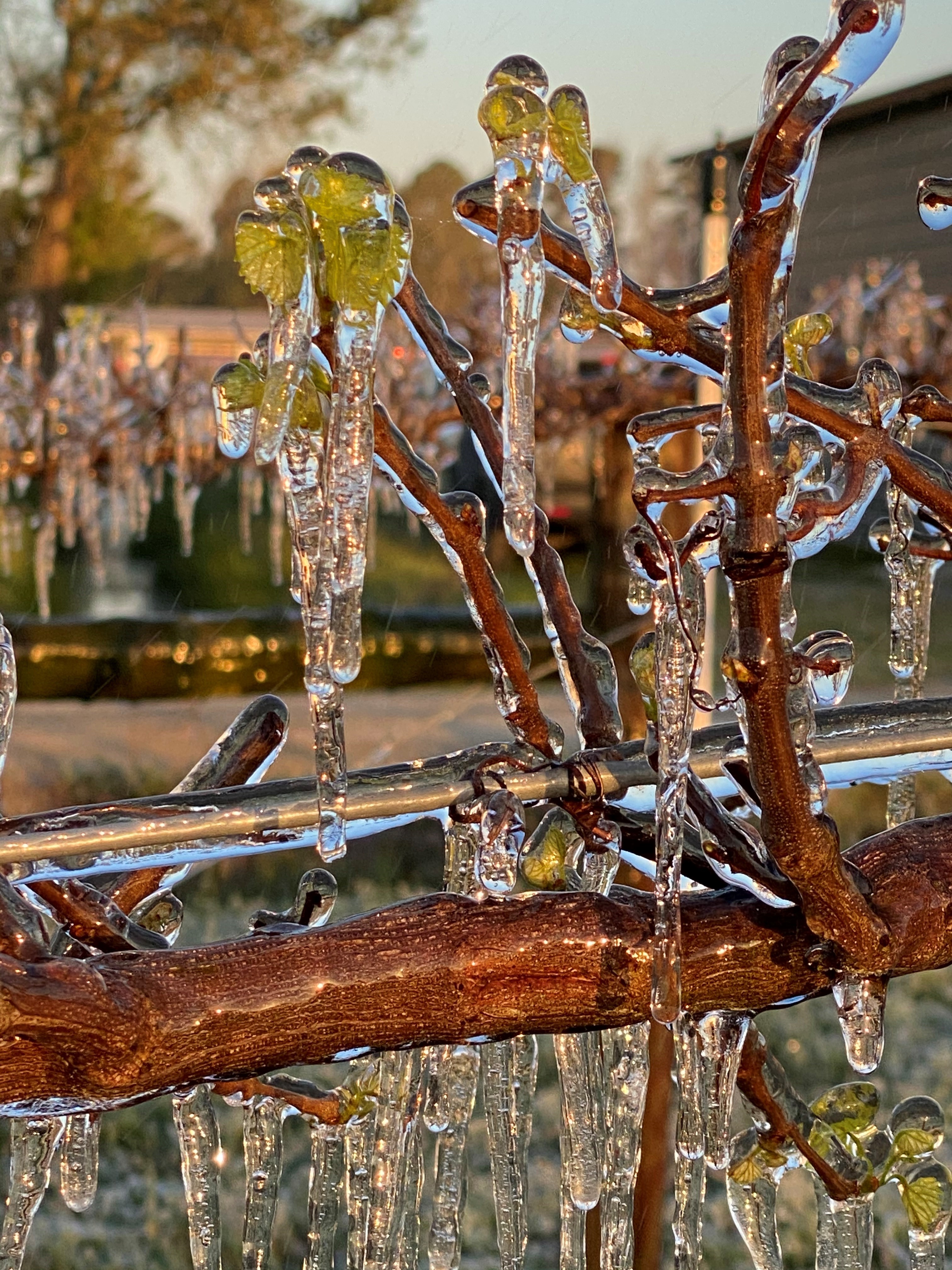

Water sprayed on budding grapevines freezes to create a glass-like cloche over the plants to protect them from frost damage.
Worry and wonder over the science behind freezing grapevines
Relying on a typical thermometer was not possible. Ground temperature, air temperature and humidity all had to be taken into consideration, not to mention the temperature required to ensure ice would property freeze around the plant.
The team watched what’s called “wet bulb temperature.” That is the temperature a thermometer reads when it is covered in a water-soaked cloth. A wet bulb temperature of exactly 35 degrees was required before spraying could begin. When that happened, the regular thermometer displayed an air temperature of 43 degrees, but the team knew it had to trust the wet bulb reading.
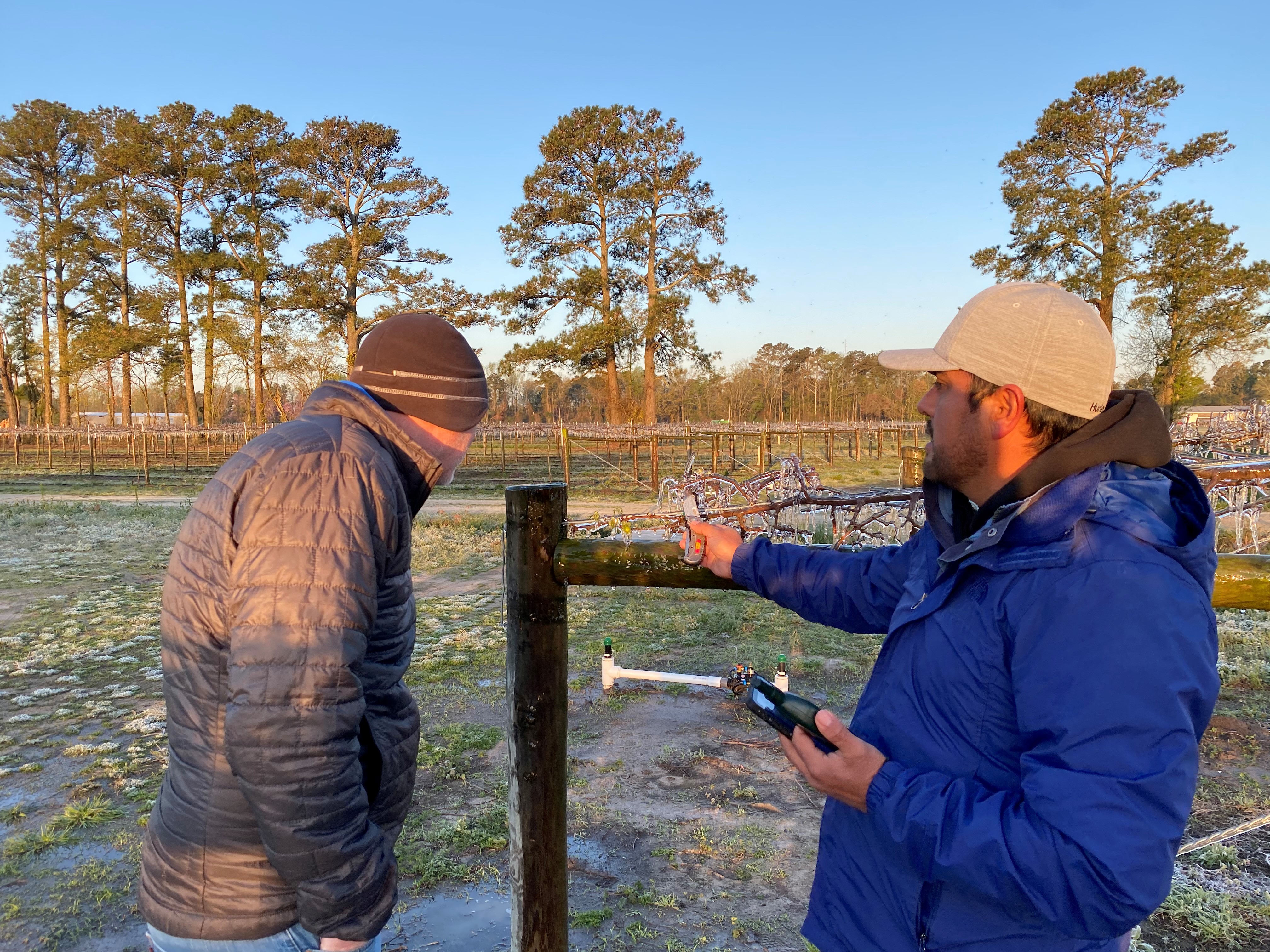

Duplin vineyard manager Juan Carlos Munguia and master winemaker Jason Bryan monitor tender, young grapevine budgtes they have coated in ice to protect them from frost damage.
No turning back now. This has to work
“Once we start spraying, we cannot stop,” Carlos said. “As soon as you stop, you’re going to lose that heat. If you stop spraying, the temperature (on the plant) is going to drop.”
Between coffee, more coffee, hand wringing, pacing and more coffee, the team checked the fields repeatedly and monitored Duplin’s new over-vine sprinklers all night long.
“It was a huge success,” Carlos said. “Other vineyards that did not have this system, they got (frost) burned.”
Duplin Winery co-owner Jonathan Fussell estimated that about 20% of grapes grown on the company’s 85 estate acres were affected by the early April frost.
Carlos said he hopes to expand the system to all Duplin Estate vineyards and help the company’s 60 contract growers with similar setups if needed. Just the Duplin Estate portion would be a huge undertaking, requiring irrigation systems and teams in every vineyard simultaneously. The investment beats the alternative, Carlos said.
“If we don’t have fruit, we don’t have the juice.”
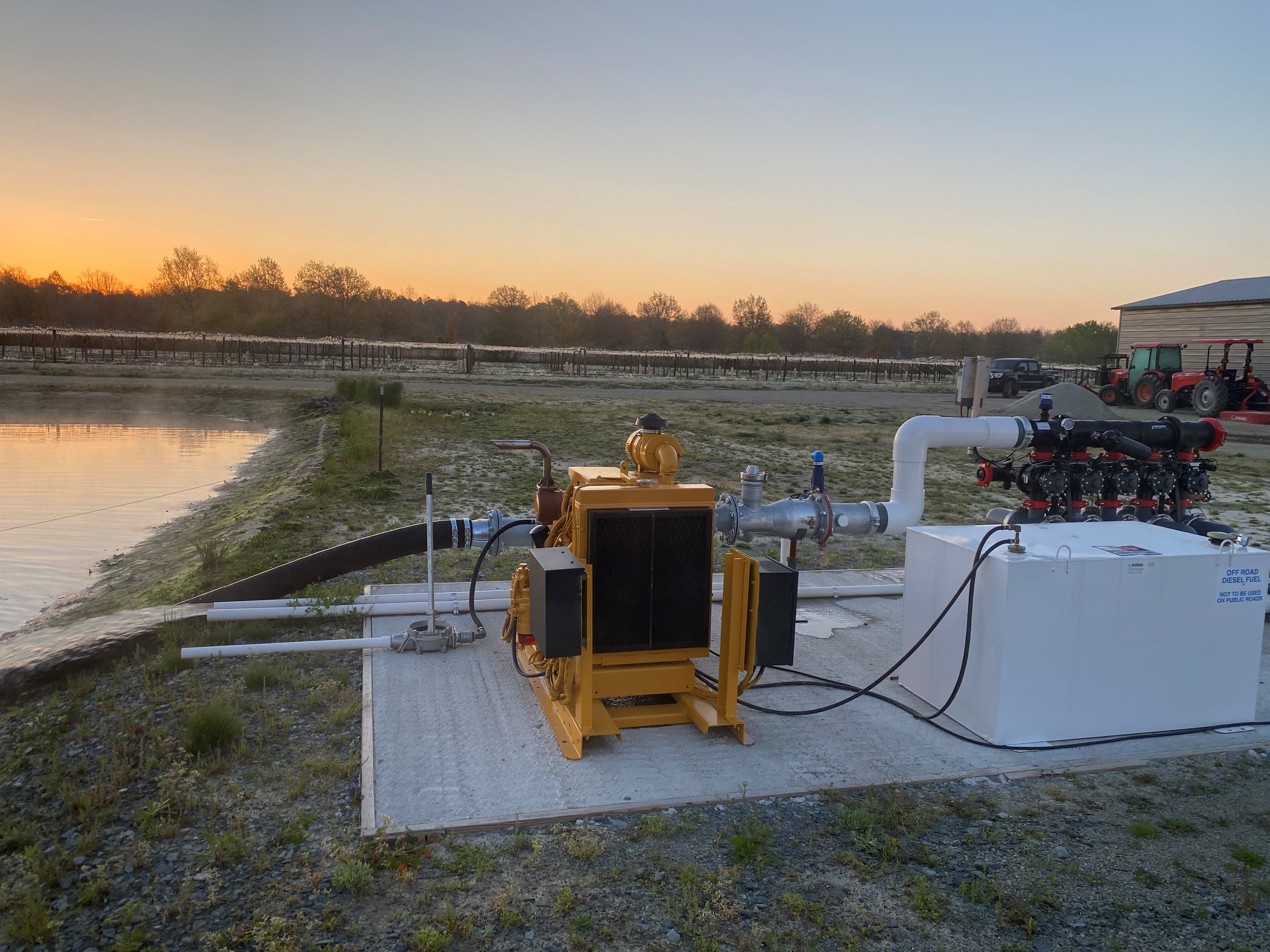

Duplin vineyard managment teams sketched out a custom system to pump water (top) through nearly 20 miles of hose on 26 acres of Duplin Estate vineyards in eastern North Carolina. The hoses ened at over-vine sprinklers aimed at 5,387 grape vines. The sprinklers sprayed a mist over vines when a wet-bulb thermometer read the exact temperature water would freeze on the vines. “It was a huge success,” Duplin vineyard manager Juan Carlos Munguia said. “Other vineyards that did not have this system, they got (frost) burned.”
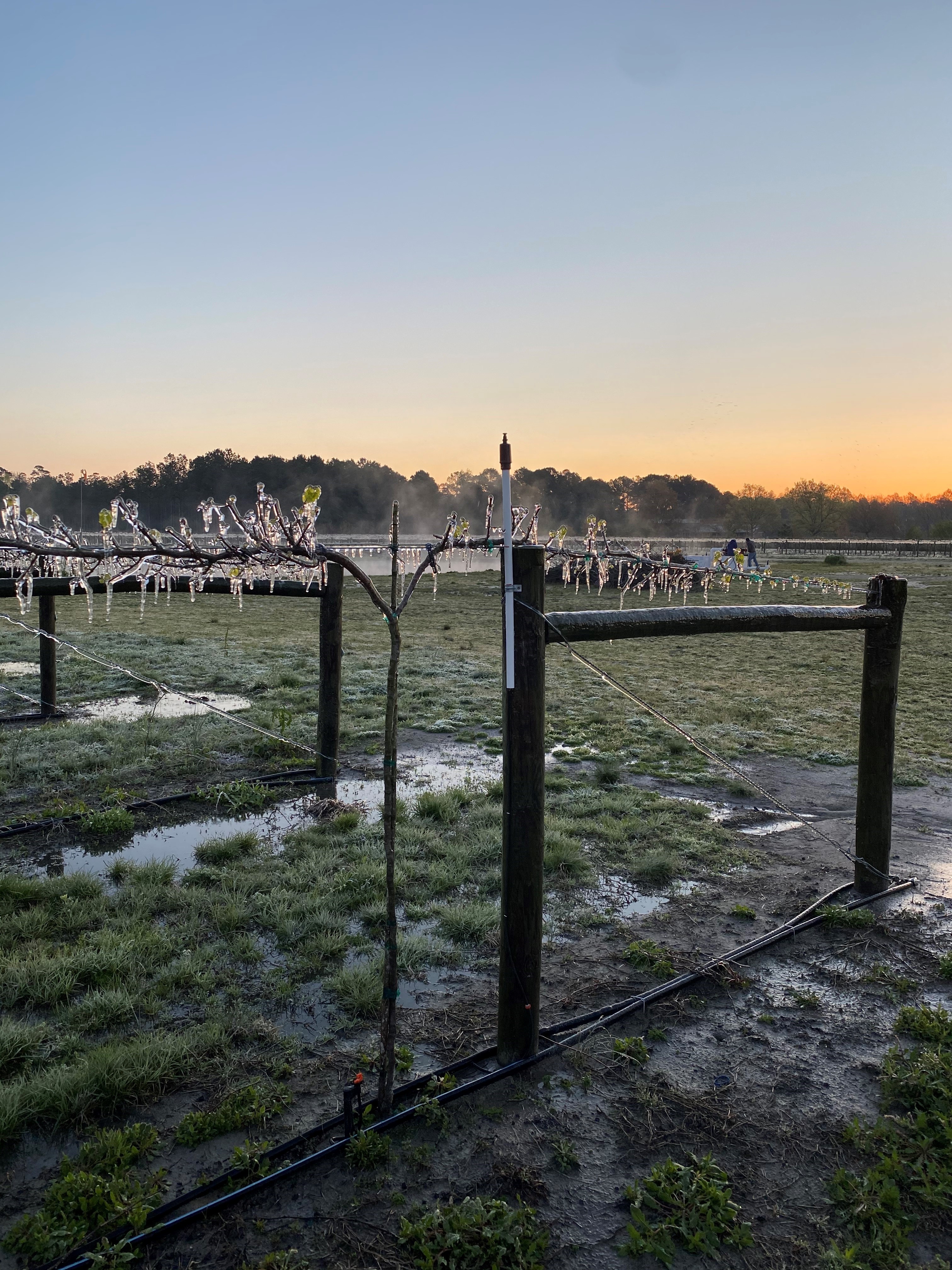

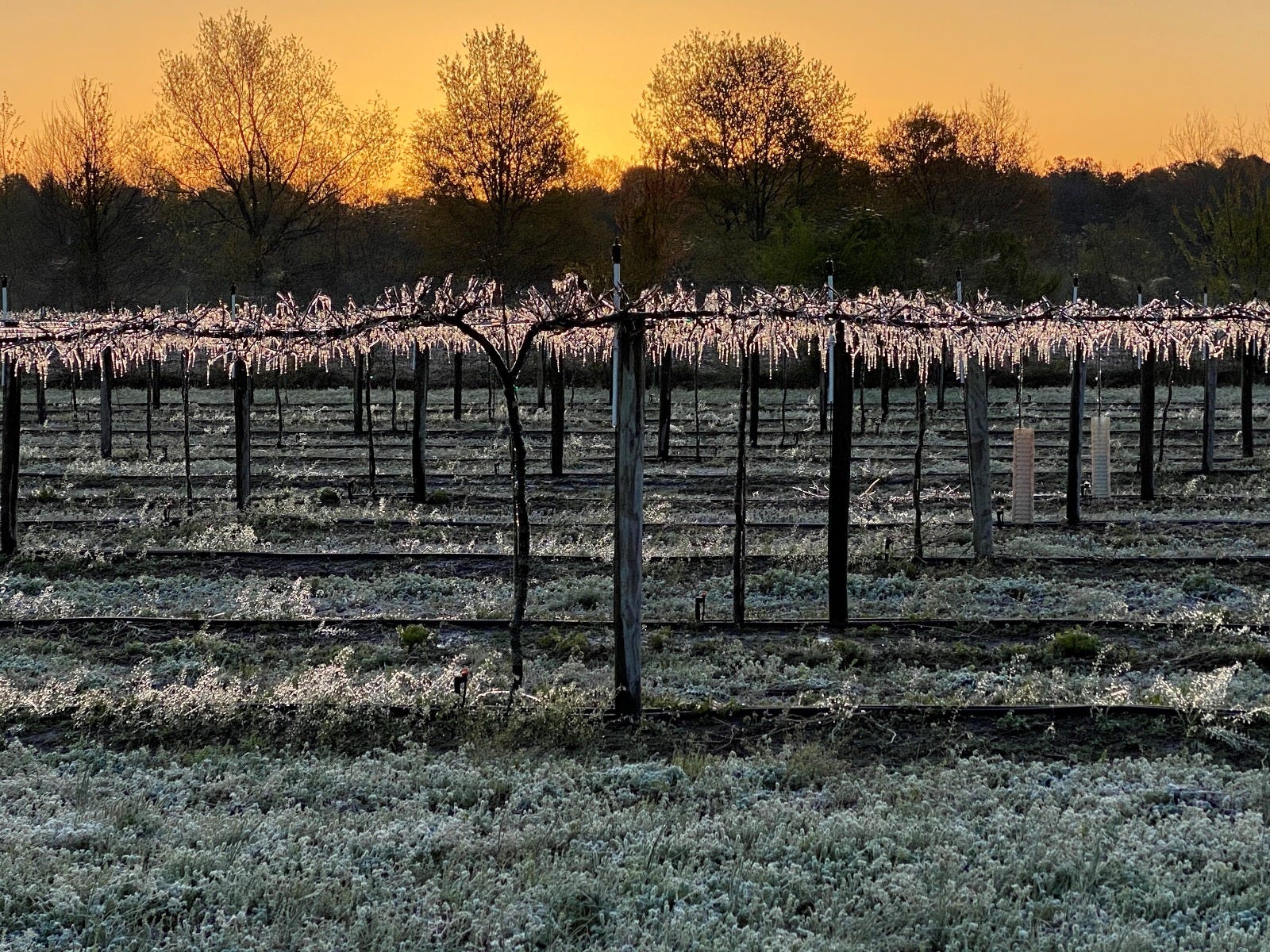 ?>
?>

